As I approached the recreation of Beatrix Potter’s Hill Top Farm I was transfixed by the sense of timelessness, tranquility and charm in which it seemed to be cocooned.
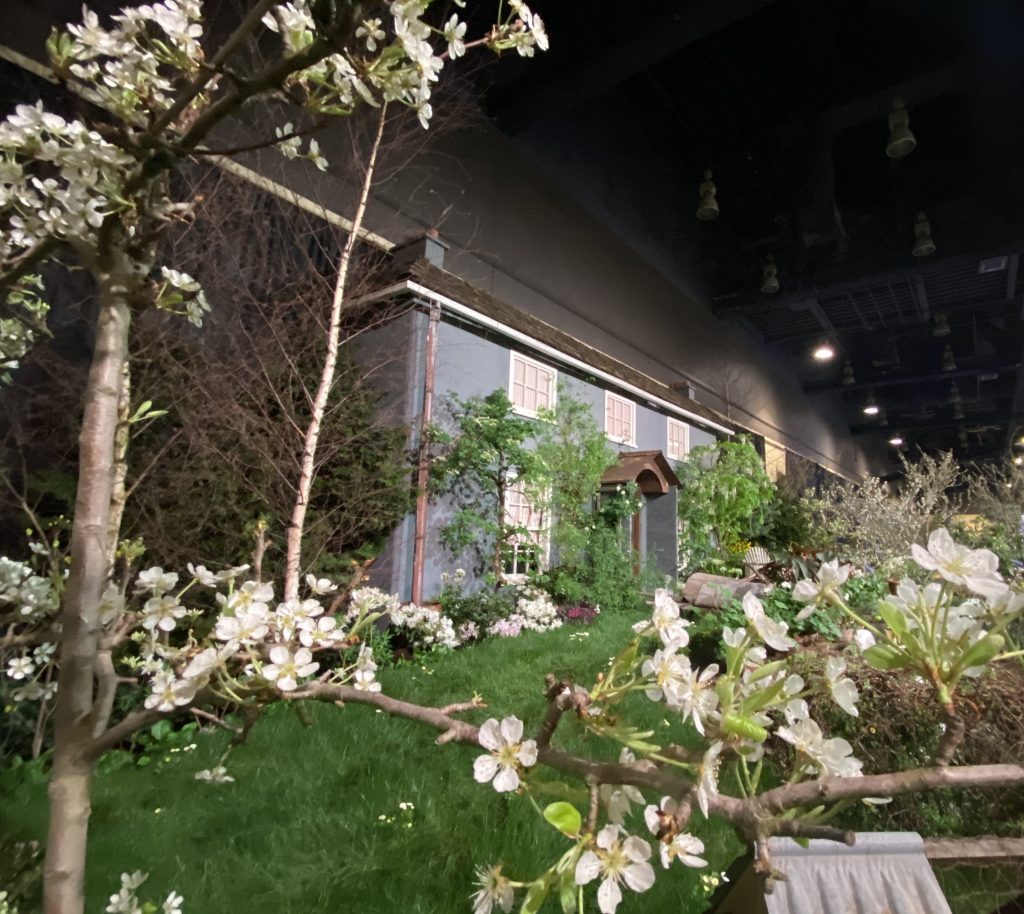
Peeking through the espalier blooming fruit trees to the pale blue cottage I felt transported to the English Lake Region.

But I wasn’t in England at all, I was at the Convention Center, in downtown Seattle at the NW Garden and Flower show.
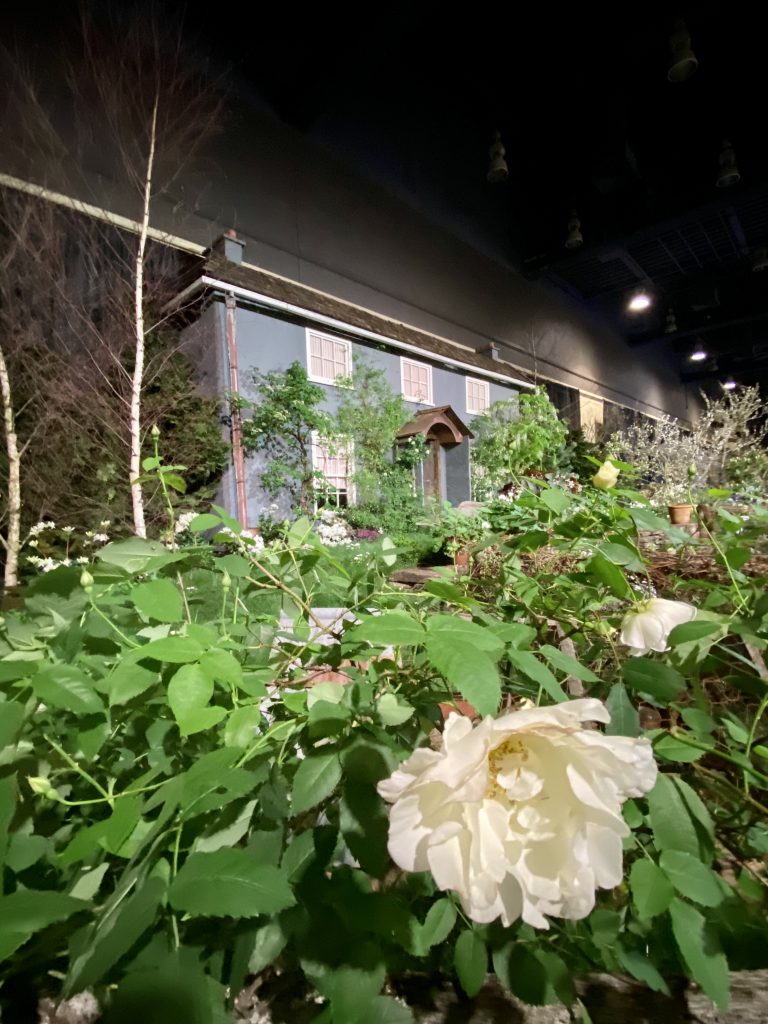
The uniquely extraordinary Christianson’s Nursery, a Skagit Valley treasure, went all out to recreate the “higgledy-piggledy” garden style of the woman who’s imagination brought to life Peter Rabbit and many other childhood friends.
“I remember I used to half believe and wholly play with fairies when I was a child. What heaven can be more real than to retain the spirit~world of childhood, tempered and balanced by knowledge and common~sense.”
~Beatrix Potter
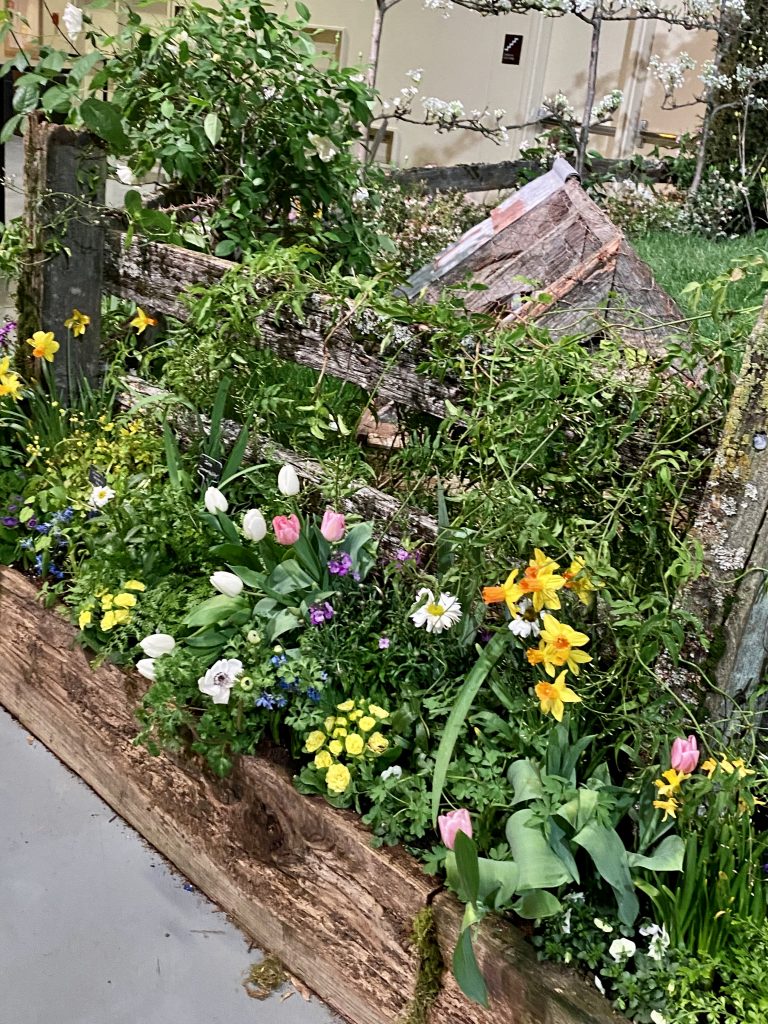
As I share with you many of the whimsical and authentic touches they incorporated from a much simpler time in life, I am sure you will agree with me that they deserved their third “Founder’s Cup Award” for the best in show display.
Live chickens strutted about in the chicken tractor. While we were watching, the white chicken in the roost actually laid an egg!!
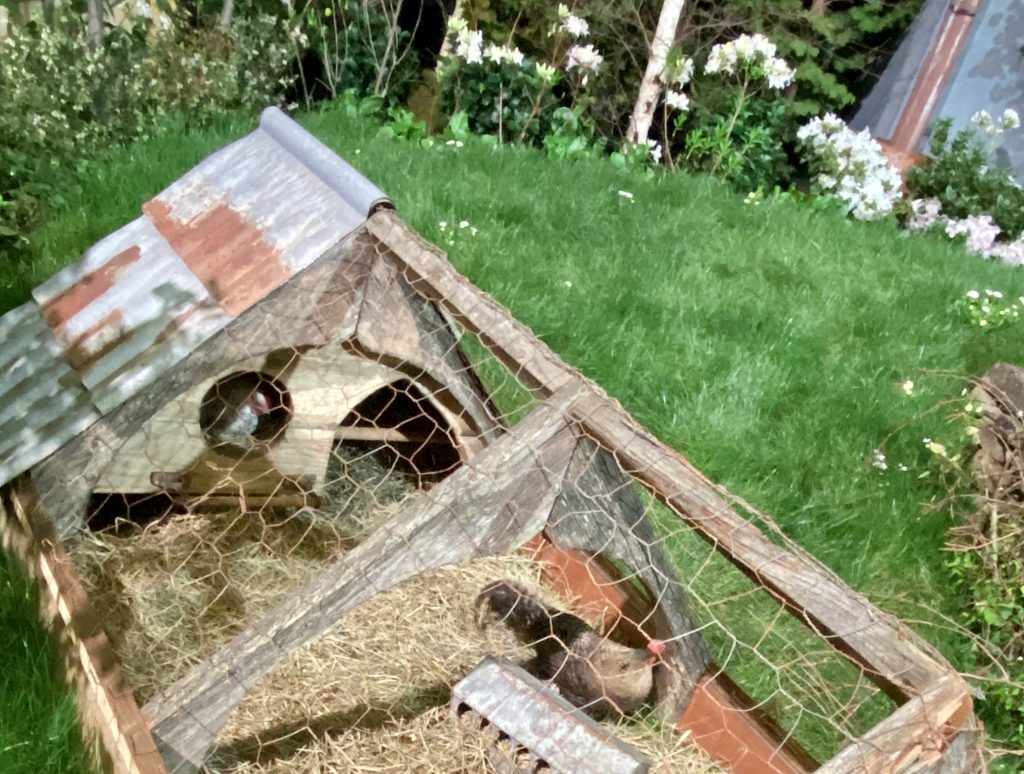
I didn’t shoot quickly enough to catch the ladybug we saw crawling on these English daisies that dotted the lush green grass. Yes, the team even released ladybugs as another layer of reality. Apparently, they released slugs in the garden as well.

They started forcing the flowers to bloom back in January by controlling the amount of light {or length of the day} soil and air temperatures using 5 different heat and light zones in their greenhouses. It took five trucks to transport the cottage, fencing material, props, blooming plants, orchard trees, vegetables, perennial flowers, mature roses {look at the substantial thorns on the vine below}, and rhododendron plants that Potter loved.
“You can complain because rose bushes have thorns or rejoice because thorn bushes have roses”
~Abraham Lincoln
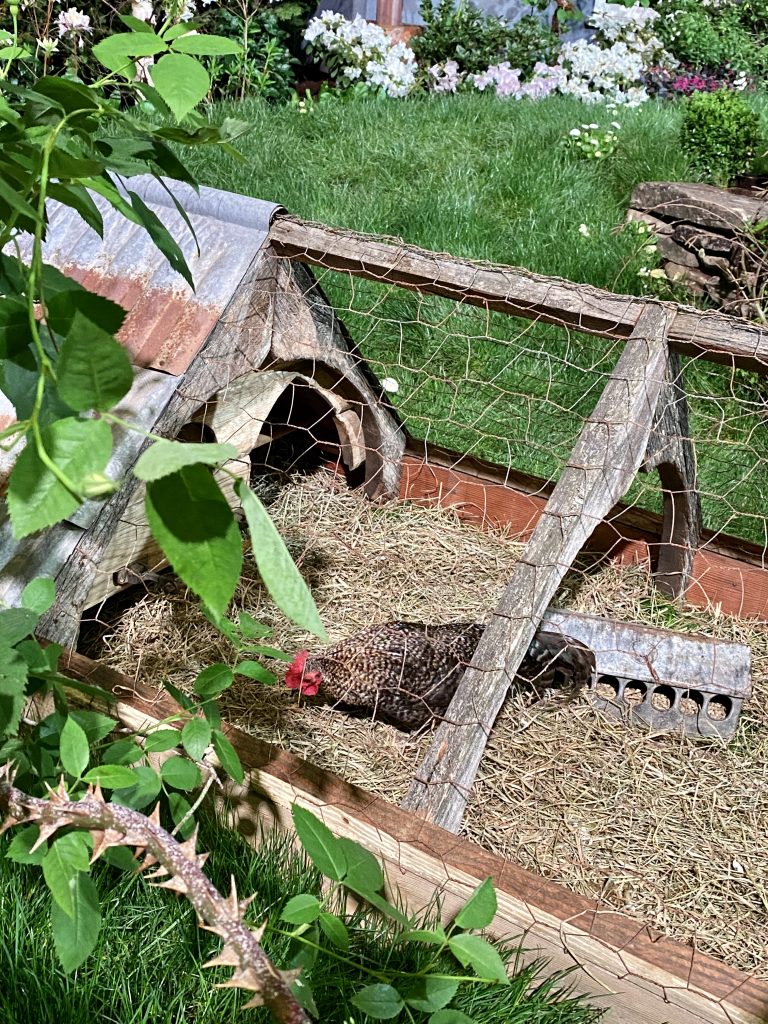
In the shot below you can see the three types of English fencing they replicated. To the left, a living hedge fence made by weaving living plants and vines together. In the forefront is a rail fence {and flower boxes} made from weathered wood that was a part of an old loading dock at the nursery. Behind the antique shovel you can see the stacked stone dry wall fence.
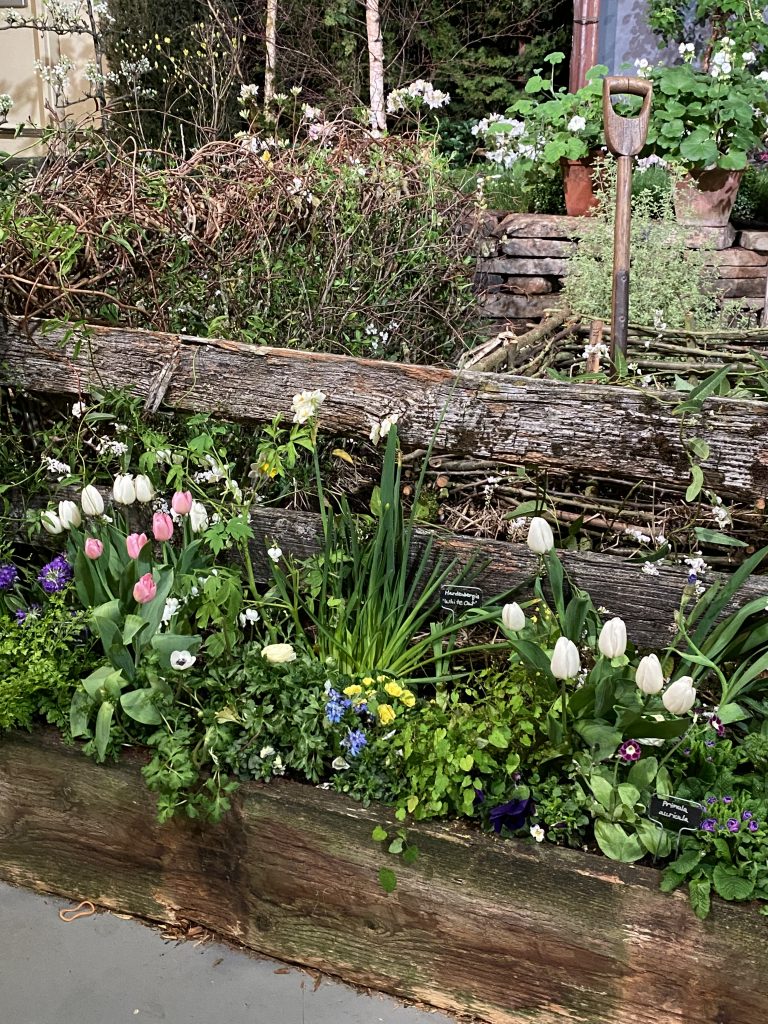
Every good garden needs a compost bin, but usually it is something unappealing we try to hide. This one, however, made of sticks & twigs could not be more delightful and blends in beautifully with the natural setting.
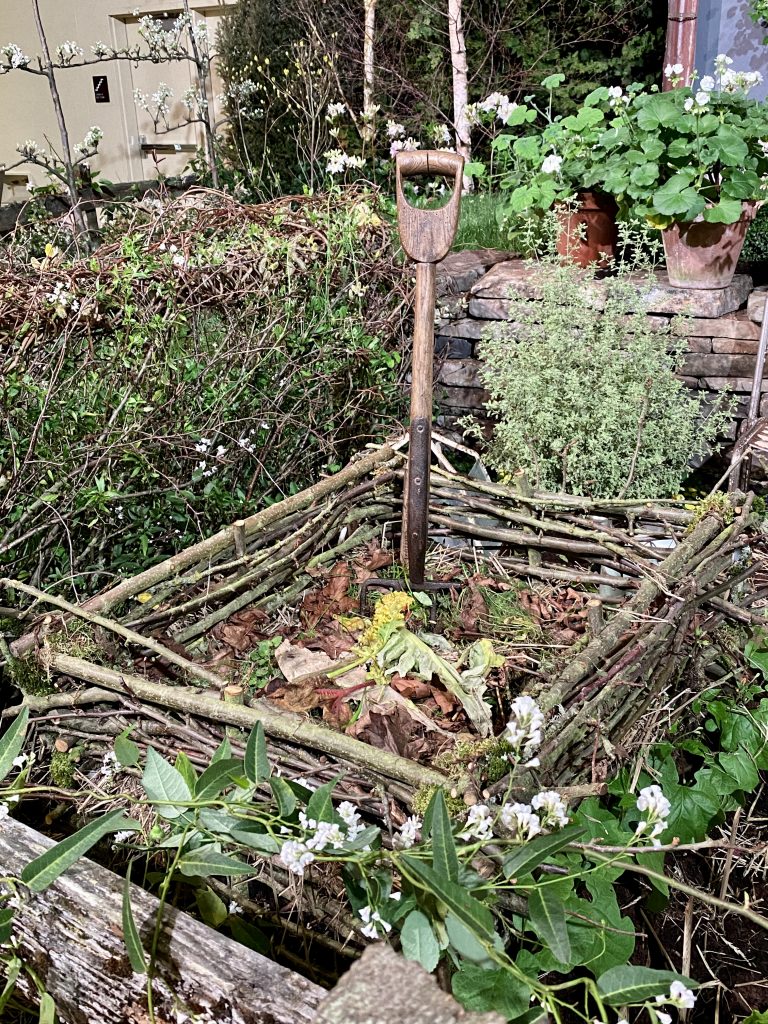
In front of the compost bin you can see the vegetable garden that tempted Peter Rabbit to crawl through the fence, rows of beets and lettuces are marked with wooden stakes and a wooden carrier is filled with more starts ready to be planted in the warming soil.
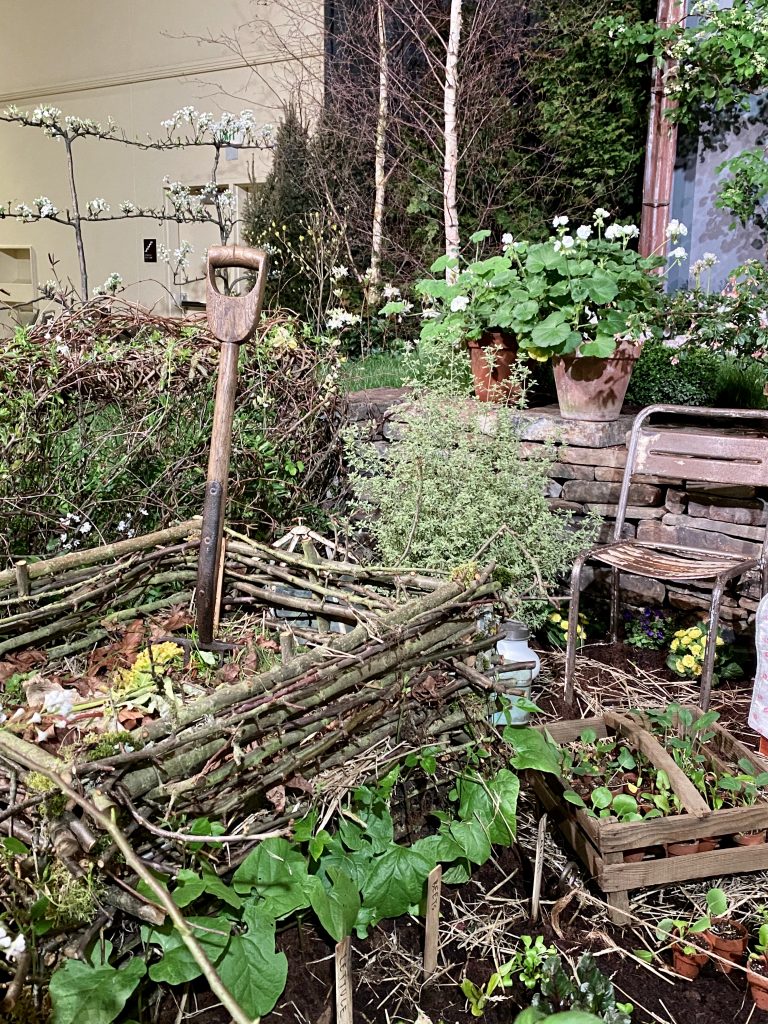
Potter purchased Hill Top Farm with her royalties from The tale of Peter Rabbit and continued to acquire parcels as she enjoyed country living and sheep farming. The gardens, countryside and architecture inspired her later stories and illustrations. She donated her 4,000 acres of farmland to England’s National Trust on the terms that they must maintain it as is, protecting and preserving all of her belongings as they were. Much of the land she preserved is now part of the Lake District National Park. Toni and John Christianson visited her country garden years ago and were eternally inspired.
“I do not remember a time when I did not try to invent pictures and make for myself a fairyland among… all the thousands of objects of the countryside”
~Beatrix Potter
I believe this gateway has a step~over stile which allows humans to pass over but makes it difficult for animals to exit or enter.
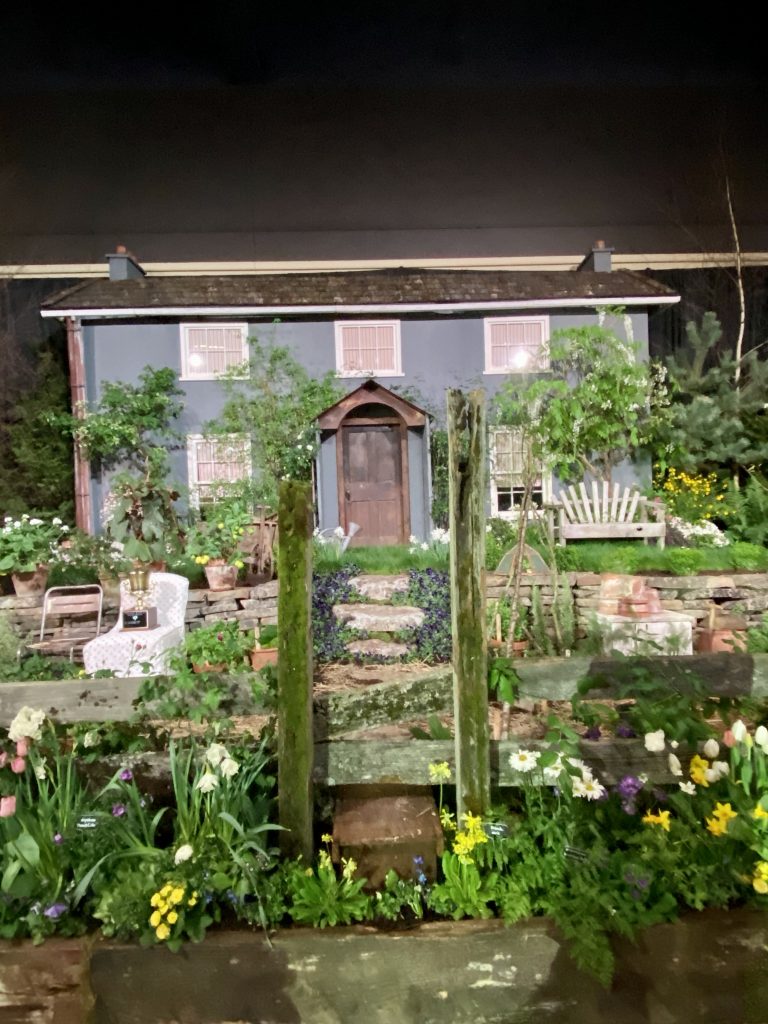
Just like the true Hill Top House the front of this 15~foot tall by 24~foot wide replication is graced with sprawling white wisteria. They used Christmas tree stands to support the trees that create the forest behind the house. Continuing along the garden path, you can see a pot of French Mint and the tops of other herbs and vegetables.
The round lidded topped pot to the right of the wood box, next to the wood handled tool, is a rhubarb or sea kale forcer. Once rhubarb is about 3 years old, one can put this over the rhubarb crown or sea kale throngs in the winter to protect it. When it starts to sprout in the spring, take the lid off to force the shoots to reach for the sun. The protective jars bring the crops on earlier and keep them sweeter by blocking the light. ![]()
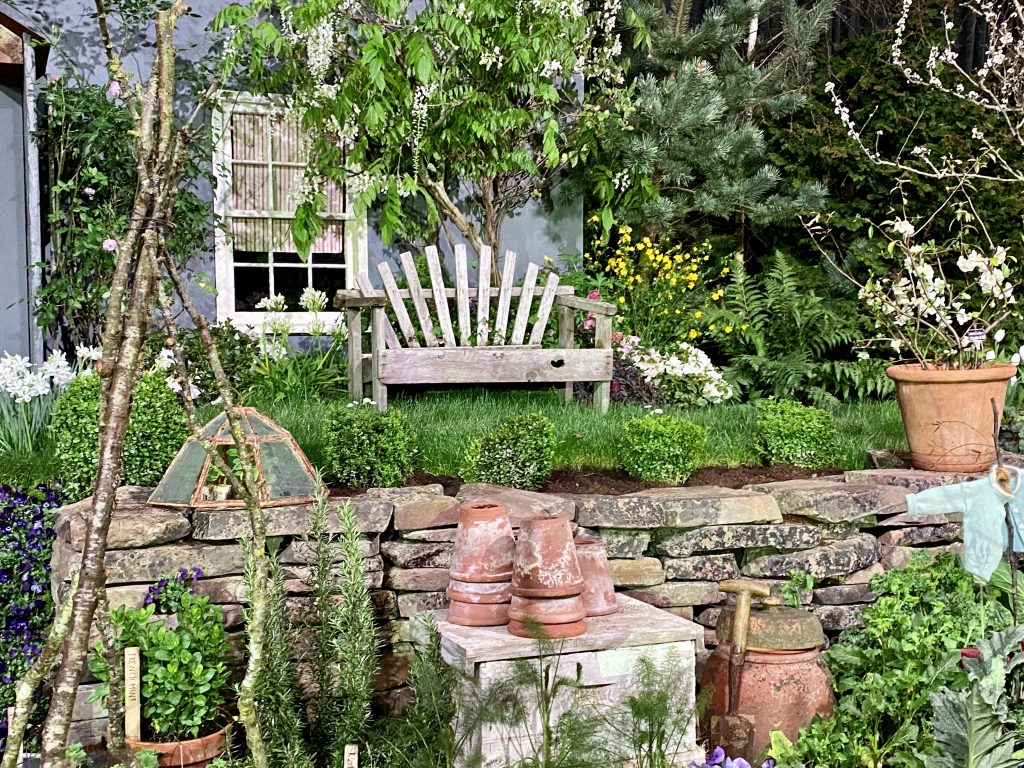
Peter Rabbit’s abandoned sweater is prominent in the cabbage patch. To the right of the sweater you have another view of a sturdy woven hedge fence.

“Once upon a time there were four little rabbits and their names were Flopsy, Mopsy, Cottontail and Peter.”
~Beatrix Potter
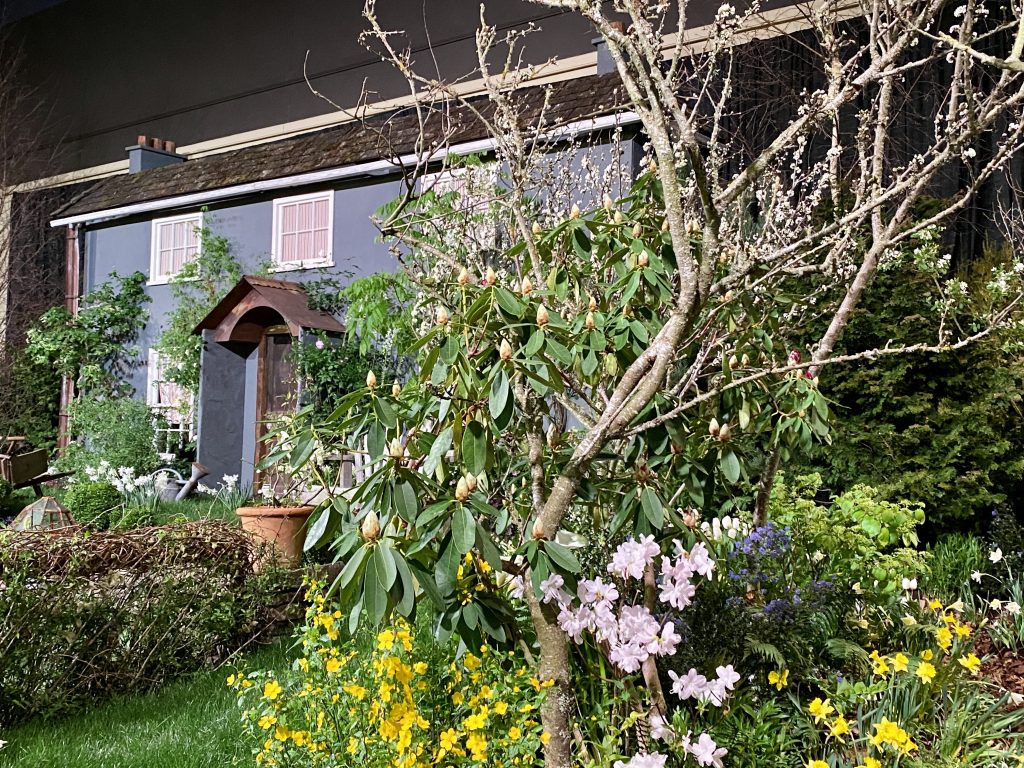
The roots of all of these trees, plants, flowers and grasses were secured in the eighty yards of soil that were spread to create the foundation for the display.
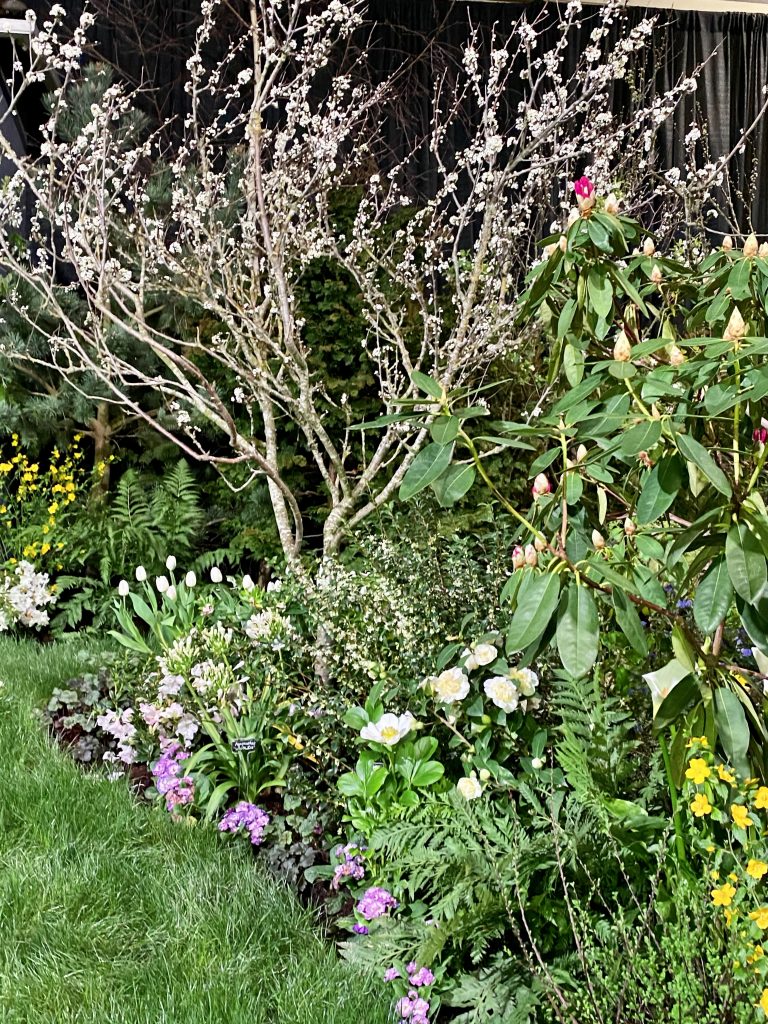
“We have a little garden,
A garden of our own,
And every day we water there
The seeds that we have sown.

We love our little garden,
And tend it with such care,
You will not find a faced leaf
Or blighted blossom there”
~Beatrix Potter
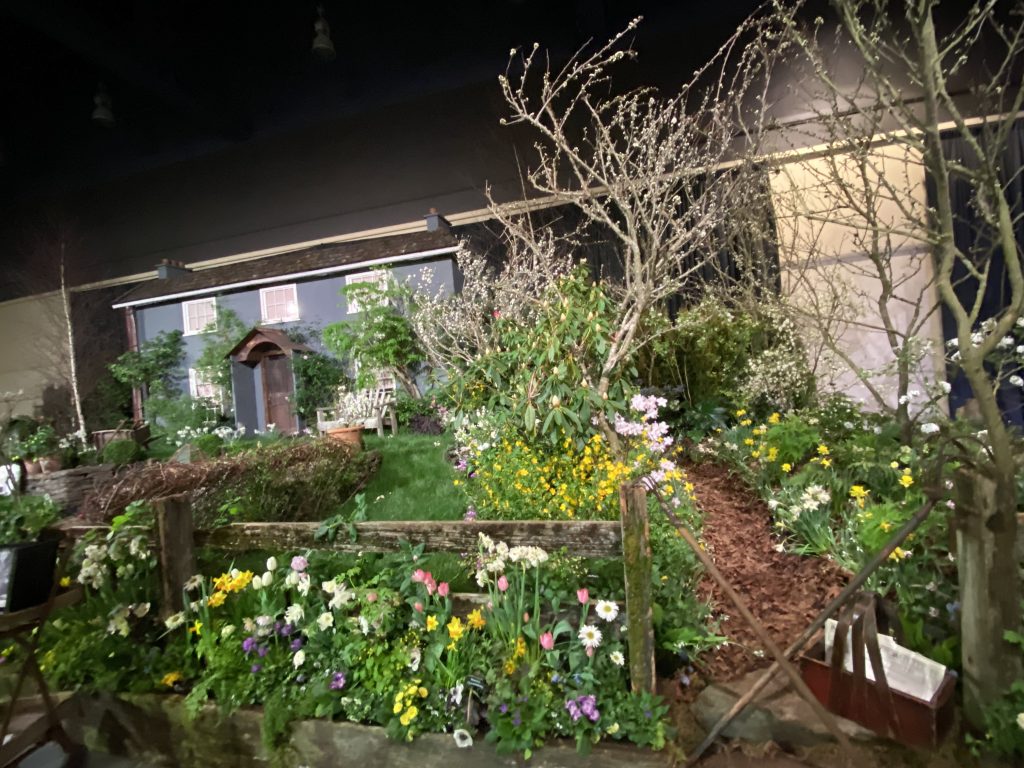



Samantha, this is a fabulous piece on what i believe is the most incredible nursery in our globe. Part of what makes it so enchanting is John and his team. I am lucky to teach for them every june in their schoolhouse. you should come!!! i’m off to the real england tomorrow so am rushing like a madwoman trying to leave my home, gardens, dog and TEENAGERS in good enough shape so that i can stop to smell the emergence of spring there. please, please stay in touch with me. i am enthralled with your photography and writing and very much want to meet you in person!
Maura
Casablanca Floral
Good luck with your trip! enjoy. I would love to come to your class June, I’ll check their calendar. Great job again on Francesca {that’s my daughter’s name too!}